Review of Shirley Temple Collection (Five Discs)
Introduction
Back in the 1930s, most of the Hollywood studios were in trouble. Although cinemagoing was at its peak, so was filmmaking and the available box office takings were spread thinner on the ground, especially at a time of Depression. All the Studios specialised in movie genres of one kind or another. Warner had their gangster pictures, MGM had their musicals. Universal had their horror movies and Twentieth Century Fox had Shirley Temple.
Born in 1928, she made her first movie at the age of four. By the time she was eight, she was one of the most famous performers in Hollywood - certainly her pictures saved Fox from oblivion. She was - to put it simply - a genuine prodigy. She could sing, she could dance, she could remember lines and nail a scene in one take. If only grown-up actors could be so reliable. How many eight-year-olds have a cocktail named after them?
Between 1932 and 1940, she made thirty movies, cornering the market in being adorable. In 1939, MGM tried to hire her to play Dorothy in The Wizard Of Oz, but the horse-trading involved in a temporary release from her contract with Twentieth Century Fox fell through.
She retired from the movies at the grand old age of 21, and in the 1980s was appointed US Ambassador to Czechoslovakia. This year, she`s 76 and a Hollywood legend.
I`m not a happy bunny looking at this set of her films. For starters, at the time of writing (10/10/04), there`s some confusion about the actual content of the set. The details Reviewer and a number of retailers were sent indicated this was a six-disc set including The Blue Bird, which was Fox`s 1940 answer to MGM`s Wizard Of Oz (and which amazingly tanked at the box office - her only movie failure). Other sites, and the most recent PR materials we were sent say that it`s a five-disc set, not including The Blue Bird. To make matters worse, Fox are too tight-fisted to send out a complete set of the movies, so I`m forced to write a review based on four out of the five/six films.
UPDATE 9/12/05: I`ve just had an irate email from a reader who bought the set based on this review and who confirms that the set does not include The Blue Bird. All I can say is that Reviewer mostly only ever gets a standard PR release and a couple of test discs to base these reviews on, and we`re as at the mercy of the capriciousness of the film companies as everybody else. Unless a Reviewer acquires a commercial edition of a release subsequently, we don`t know about any changes unless somebody tells us.
The other missing title is one of the best and most important of the set - Heidi. What I`m left with is four of her pictures - all banged out one after another between 1935 and 1936. Obviously no child exploitation laws back then, either that or the Studio convinced the child welfare people she was a forty-year-old midget. To add insult to injury, these movies have been colorized.
Yuck.
If the set had included Curly Top (1935) where she sang "Animal Crackers", The Little Colonel (1935) where she tapdanced with Bill "Mr Bojangles" Robinson, Dimples (1936), or Wee Willie Winkie (1937), you`d have had a set of the young lady at her most dazzling. As it is, these pictures are a mixture of music, melodrama and sentiment that completely enchanted America of the depression, but in this case are B-list rather than A-list. Shirley Temple was the highest grossing box office star of that three year period, outselling even Clark Gable, and in 1935 she became the youngest recipient of a special Academy Award for outstanding achievement. The statuette was a totally unique miniature one to match her stature. Her movies usually played on her musical talents, but ask her to cry and she could render the toughest audience to snivelling wrecks.
The movies in this set include the classic children`s story Heidi (1937), based loosely on Johanna Spyri`s tale with the addition of musical numbers. As I say, this wasn`t included in the pack of test discs so I can`t pass comment on it.
The discs I have been able to watch were:
Our Little Girl (1935) She runs away to join the circus, in the hope it will reunite her estranged parents. Joel McCrea plays her father in what is more of a lump-in-the-throater than the rest of the movies in this set.
The Stowaway (1936) She plays Barbara, aka Ching-ching, daughter of a Chinese missionary who is killed. She stows away on the yacht of a playboy (Robert Young) and charms all and sundry with a series of musical numbers. This picture was a particular hit in 1936.
Captain January (1936) Another hit as she plays a shipwrecked orphan taken in by a kindly lighthouse keeper (Guy Kibbee). She enchants the local fishermen (including a very young and shiny Buddy Ebsen with whom she does an eccentric dance routine). The local truant officer starts to make trouble, saying that such a young girl shouldn`t be in the charge of an old goat like Captain January - cue floods of tears. I defy anybody not to get misty-eyed when she is taken off to her new home with her uncle and aunt when all she wants to do is stay with the elderly Cap.
Poor Little Rich Girl (1936) Stifled by an overprotective widower father and a nanny with a sense of humour bypass, Barbara Barry (Shirley) jumps at the opportunity to go away to boarding school and meet some other kids. On the way, her overbearing nanny meets with an accident and Barbara does what any bright kid in the thirties would do - she assumes a false name and goes off on a little adventure. She meets up with an organ grinder and his monkey and follows them home to their apartment building. Entertaining them by dancing, she attracts the attention of song-and-dance hustler Jack Haley (the Tin Man to be from The Wizard Of Oz). He and his missus (Alice Faye) are trying to break into radio and Shirley provides the perfect gimmick. Meanwhile, her doting father Richard Barry (Michael Whalen) is completely oblivious to all this, as he thinks she is safely on her way to the school. A soap magnate, he has his eye on his closest rival and he meets his rival`s (what we would call Head of PR now) played by Titanic`s Gloria Stuart. She doesn`t know she`s just hired Barry`s daughter and her adoptive parents the Dolans to do a regular radio show which is proving an absolute smash. This is easily the best of the four movies I got to see, with Shirley Temple at her perkiest best.

Video
*Sigh* Where to start? The films were all made in the classic Academy format (4:3), and are contemporary with the Laurel and Hardy shorts and the Universal Horror sets. In comparison with them (and ignoring the colorization for the moment), the films have not aged well. The images are distinctly soft and fuzzy, with frequent film artefacts such as scratches and dust. On one sequence in Poor Little Rich Girl, it is obvious a bad splice springs the gate of the telecine machine as the image lurches and loses focus for a few seconds. Our Little Girl as the oldest by about a year has suffered the worst, with the image seriously lacking in detail, but none of the pictures are especially well preserved. Viewing OLG, I noted a copyright notice for the colorized version of 1986. The transfers would bear that out as they obviously haven`t been made to the videophile standards the Studios demand for mastering DVDs today. I`m led to suspect that possibly all the movies in the set were mastered and colorized back in 1986 by Color Systems Technology for cable television and VHS video release. I`m also inclined to think the masters for these discs may also have been NTSC, so there`s the addition of standards conversion to really batter the image to death.
Moving on to the quality of the colorization, as much as cinema purists abominate the process, it can work well. The opening moments of The Stowaway had me checking my reference sources to check it was shot in monochrome as it looked convincingly like ancient Technicolor (of a seriously battered Technicolor print, mind). I have a Public Domain print of Road To Bali (made in colour and mastered to DVD from a totally crapped-out videotape master) that has similar image qualities. The major problem with colorization of a movie that is suffering from age-related image difficulties is the old one of colour lag and bleeding. Quite often you`ll see the inevitably pastel hues rendered by the process unsticking from the edges of the object like a badly-tuned analogue tv signal.
However.
When you really get caught up in movies like these, you tend to forget you`re watching a pretty lousy picture. I guess that`s what they mean by the magic of the movies. If you`re never caught up like that, or one of these bods for whom a glimpse of CGI shatters the illusion, you`ll probably bitch endlessly about the quality of these releases.
I just hope somebody at Fox finds the budget to get these movies properly preserved for the future.
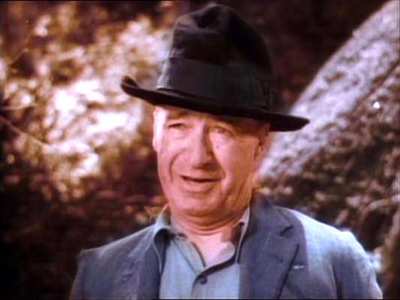
Audio
Shirley Temple was born the same year as sound was introduced to the movies. When these pictures were made, soundtracks tended to be recorded on shellac discs like the old 78s rather than on optical tracks. That means that all the shortcomings of the old recording techniques and generational issues of transferring disc to optical track some time in the past means these pictures suffer from snap, crackle and pop; fuzzy reproduction and little definition. There`s not a lot you can do to renovate something like that, although had these transfers been done under today`s rigours they`d probably sound a lot better.

Features
You get subtitles, but that`s it.

Conclusion
There`s never been a child star since Shirley Temple who`s captivated the world in quite the same way. Not even Macauley Culkin. Shirley Temple could do nothing wrong. She could sing, she could dance, she could act and she could probably have written and directed the films as well if anybody had given her the chance. Her films are full of the wide-eyed innocence of the pre-war world, and gave the public the opportunity to leave the cares of the Depression in the movie-theatre foyer. It`s a shame then that this set doesn`t quite show her at her most incandescent. There are a couple of standout pictures included in the set, but the absolute gems of her career are conspicuous by their absence. Perhaps the worst sin is the use of colorized video masters to author these discs from. A wasted opportunity.
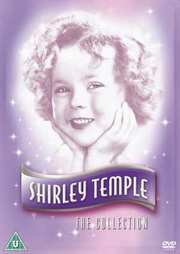
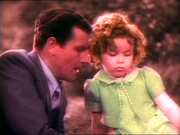

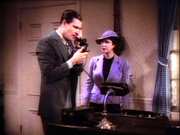
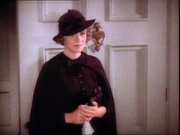
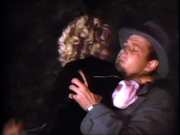
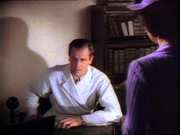
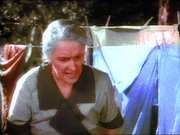



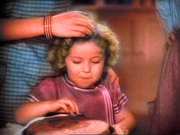

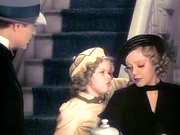
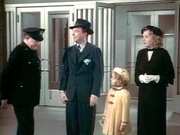
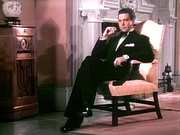
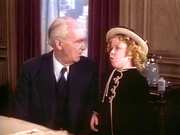
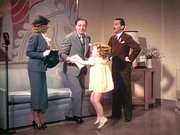
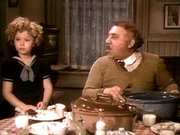
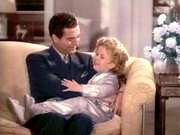

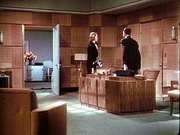


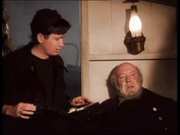


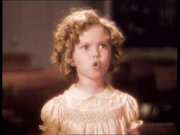
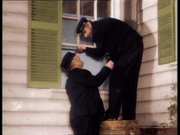
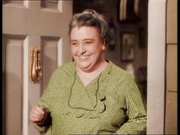
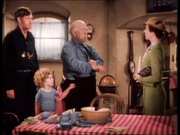
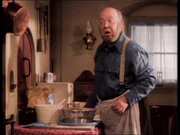
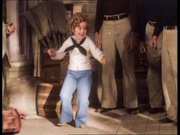
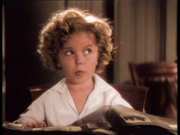

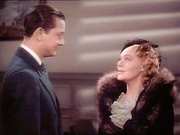
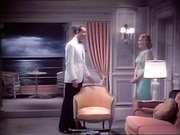
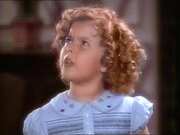
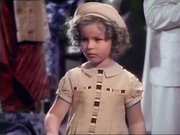
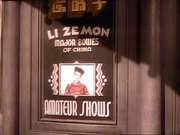
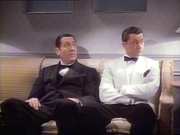
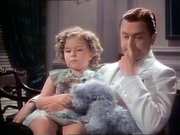
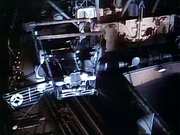
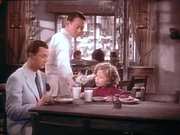
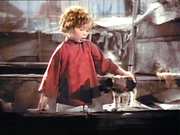

































Your Opinions and Comments
Be the first to post a comment!